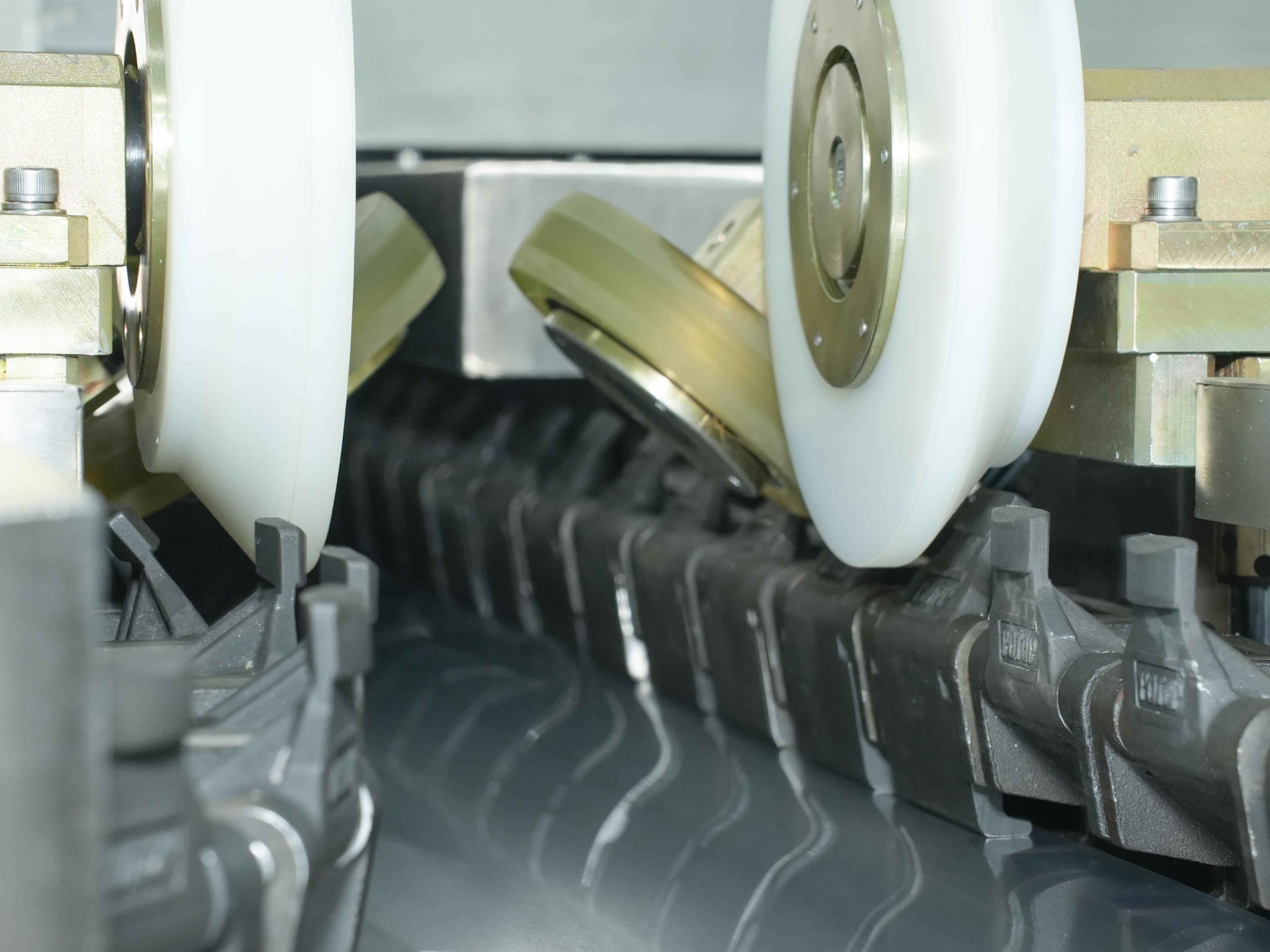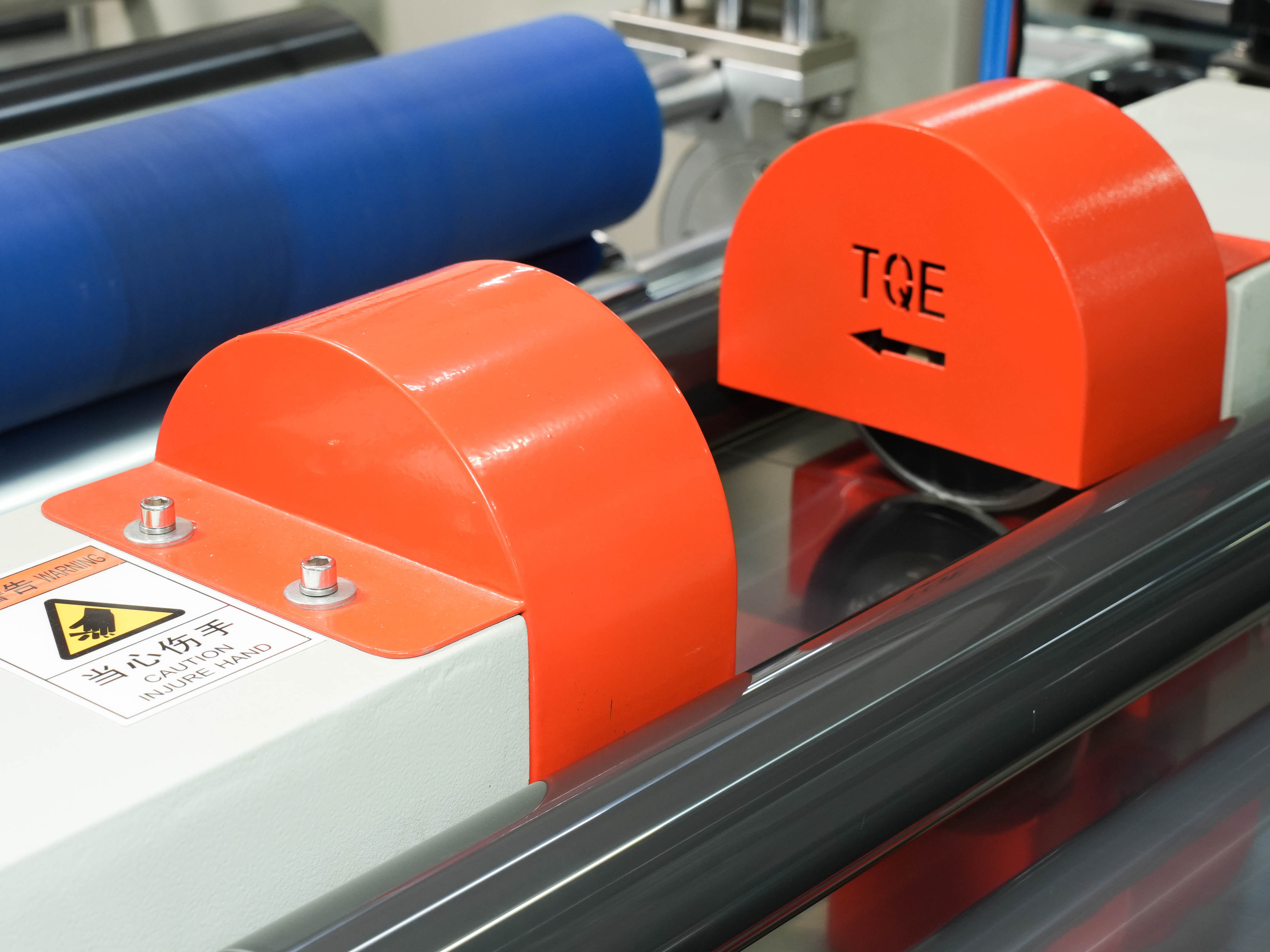Film Biaxial Stretching Molding
There are many methods for forming plastic films, such as calendering, casting, blow molding, stretching, etc. Among them, biaxial stretching has become one of the most popular methods in recent years.
Plastic films suitable for biaxial stretching production mainly include polyester, polypropylene, polyamide, polystyrene and polyamide films. Stretching causes the polymer chains in the polymer to be arranged and oriented along the direction of the force, thereby adjusting and improving the aggregate structure of the polymer and obtaining the various physical and chemical properties we expect. Stretching can be divided into uniaxial stretching and biaxial stretching. The former orients the chains in one direction.
The common characteristics of biaxially stretched films are high tensile strength, good stiffness, high transparency, good high and low temperature resistance, good insulation performance, high barrier properties, and non-toxic and tasteless. It is very suitable for the packaging of food and high-end goods. It is also widely used in electronic industrial products, photosensitive films, tape substrates, especially optical films, etc. It is a material with excellent performance.
After biaxial stretching > online anti-static coating, in addition to molecular orientation, the microstructure of the film also changes greatly, making its performance significantly different from that of non-stretched film. Its main performance is as follows:
- Mechanical behavior
Thermal shrinkage is a characteristic of biaxially stretched films, which can be used for shrink packaging. In order to make the film have low-temperature shrinkage, it is particularly advantageous to use the tubular film method with simultaneous biaxial stretching. This is because the microstructure can be increased under biaxial stretching, and the film bubble is directly cooled and in a stretched state.
- Thermal properties
Thermal shrinkage is a characteristic of biaxially stretched films, which can be used for shrink packaging. In order to make the film have low-temperature shrinkage, it is particularly advantageous to use the tubular film method with simultaneous biaxial stretching. This is because the microstructure can be increased under biaxial stretching, and the film bubble is directly cooled and in a stretched state.
- Optical performance
After biaxial stretching, the transparency and gloss of the film are improved. In particular, since no spherulite structure is formed, the refractive index of the film is increased, so the gloss and transparency will not be reduced due to damage.
- Electrical properties
Electrical properties such as breakdown voltage and volume resistivity are improved to varying degrees in biaxially stretched films. Sometimes, static electricity problems occur.
- Airtightness
The water vapor, oxygen or other gas permeability of films produced from crystalline polymers is reduced by 1/3 to 1/2 after biaxial stretching, which is particularly important in the food packaging industry.
- Antistatic
After online coating treatment with long-lasting and long-lasting polymer transparent conductive liquid, the surface of the product is evenly coated with a permanent anti-static coating, which directly acts on the surface without affecting the transparency and the anti-static effect is even better!

During the processing, the film will be oriented, generally divided into transverse and longitudinal orientation. Due to different processing techniques and parameters, the orientation is also different. For example, blown film has both longitudinal traction and transverse inflation, and the longitudinal and transverse orientations are relatively balanced, and the mechanical properties in the two directions are also relatively balanced. For cast film, there is only longitudinal traction, but no transverse inflation, so the longitudinal orientation is greater than the transverse orientation, and there are obvious differences in the mechanical properties in the two directions. For example, the longitudinal tensile force is large, but the tear strength is very low.
Monoaxially oriented film (MDO) uses the speed difference between the rollers to further stretch the film longitudinally, thereby improving the stiffness, transparency, and certain mechanical properties of the film. At this time, the longitudinal orientation is much greater than the transverse orientation. If transverse stretching is performed on this basis, it is what we usually call biaxial orientation (BO). Biaxial stretching can be completed in one step, commonly known as synchronous stretching; it can also be completed in two consecutive steps, commonly known as asynchronous stretching. If the orientation in the two directions is equal, the final film is isotropic in performance; if the orientation in one direction is greater than the orientation in the other direction, the film is anisotropic in performance.
In order to obtain effective orientation, the polymer is preferably stretched at a temperature below the melting point, and at the same time, sufficient heat should be provided during stretching to allow the molecules to move. The higher the temperature, the faster the molecules move, the shorter the relaxation time, and the less actual orientation is produced. After stretching, the film will be cooled and shaped to obtain thermal stability. Ideally, sufficient orientation is obtained by cooling before the stretched molecules relax.
After biaxial stretching, the tensile strength and elastic modulus of the plastic film are significantly increased, and the mechanical strength is significantly improved. In addition, the heat resistance, cold resistance, transparency, gloss, air tightness, moisture resistance and other properties are also improved, and it has a wide range of uses. The polymer materials that can be used for the production of biaxially stretched films are: polypropylene, polyester, polystyrene, polyamide, polyvinyl alcohol, EVOH, polyvinylidene chloride, polyethylene, etc.
Among them, biaxially oriented polypropylene (BOPP) film is mainly used for packaging of food, medicine, clothing, cigarettes, etc., and is widely used as the substrate of composite film and electrical film; in addition to being used for various industrial purposes such as tapes, floppy disks, and films, biaxially oriented polyester (BOPET) is also widely used in packaging of steamed food, frozen food, medicine, cosmetics, etc., and its stiffness and scratch resistance are very excellent; biaxially oriented polystyrene (BOPS) is mainly used for packaging of food and toys; biaxially oriented polyamide (BOPA) is mainly used for various vacuum, inflation, steaming and sterilization, liquid packaging, etc., and has the best toughness and good gas barrier properties.

https://www.potop-polymer.com/biaxial-stretcher/bopp-bopet-bopa-film-biaxial-stretching-test.html


